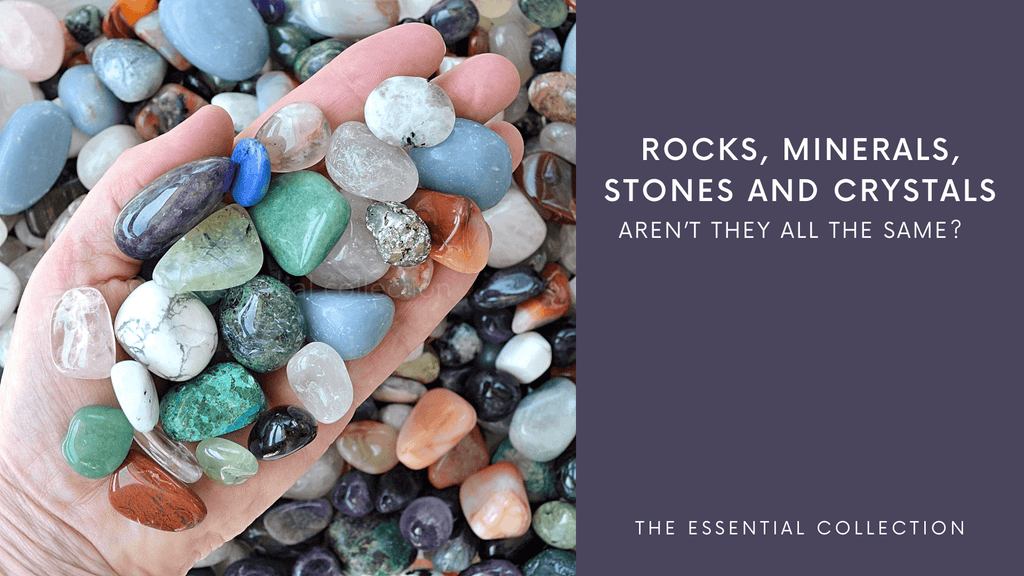- Regular
- $19.99
- Sale
- $19.99
- Regular
- $19.99
- Unit Price
- per
FREE SHIPPING FOR AUSTRALIAN ORDERS OVER $80
SHOP NOW & PAY LATER WITH AFTERPAY


Geology terms like rocks, minerals, stones, and crystals are often used interchangeably, which can be very confusing. There are actually some differences between the terms and we thought it was time we wrote you a quick blog post to make it all a little easier to understand.
Although rocks, minerals, stones, and crystals are each unique entities, they are linked within Earth's geological history. Rocks act as storage for minerals, stones display the variety of geological materials, and crystals reflect the beauty and perfection of nature's design. By recognising the distinctions between these entities, we enhance our appreciation for the Earth's crust's diverse wonders and the captivating world of minerals.
Rocks are the building blocks of the Earth's crust. They are aggregates of minerals, organic matter, and other substances, formed through various geological processes such as cooling and solidification of molten lava, sediment deposition, or extreme heat and pressure-induced changes in existing rocks. There are alot of different types of rocks, including igneous, sedimentary, and metamorphic, each with its own formation history and characteristics. I know this all sounds very scientific, so in simplified terms rocks are made up of a combination of several different minerals.
Minerals are the individual chemical compounds that make rocks and other geological materials like crystals. They are naturally occurring, inorganic substances with a specific chemical composition and crystal structure. Minerals form through various processes, including crystallization from molten material, precipitation from solution, or alteration of existing minerals under high pressure and temperature conditions. Each mineral has its own unique properties, such as colour, hardness, and cleavage, to distinguish it from others. Essentially, minerals are the ingredients used to make the rock, stone, crystal etc.
Now look, most would say rocks and stones are the same, and I agree. Stone is usually used as a generic term to refer to small, solid pieces of mineral matter found on the Earth's surface. They can be composed of one or more minerals and may range in size from pebbles to boulders. Stones are pretty much rocks that are useable or 'workable', often prized for their aesthetic appeal, durability, and versatility, making them valuable in various industries, including construction, landscaping, and jewellery making.
Crystals are a unique type of mineral distinguished by their highly organised, repeating atomic arrangement, known as a crystal lattice. In contrast to rocks and stones, which can have varied compositions, crystals are homogeneous structures made up of either a single mineral or a blend of minerals that share a consistent chemical composition. They showcase distinctive geometric shapes, vibrant colours, and remarkable optical properties, making them highly valued for their beauty and charm. Crystals develop through crystallisation, a process in which molecules organise into a repeating pattern as a solution or molten material cools and solidifies.